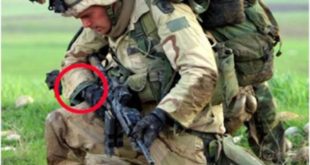Related Articles
Quantum Sensors in Electronic Warfare: Achieving Unprecedented Signal Detection & Precision Timekeeping
Quantum sensors and clocks are empowering military forces with next-level signal detection, real-time synchronization, and decisive strategic advantage.
Introduction
Quantum sensors are poised to revolutionize electronic warfare (EW) by harnessing the unique principles of quantum mechanics to achieve unprecedented sensitivity and resolution in detecting electromagnetic signals. Unlike traditional sensors that rely on classical physics, quantum sensors exploit phenomena such as superposition and entanglement to monitor the electromagnetic spectrum across broad frequency ranges with exceptional precision. This leap in capability is critical in modern defense scenarios where adversaries employ sophisticated techniques—such as frequency hopping, stealth technology, and signal jamming—to evade detection. In this article, we explore how quantum sensors and quantum clocks are set to enhance EW capabilities, transforming the way military forces intercept and analyze critical signals and synchronize complex operations.
Quantum Sensors for Electromagnetic Signal Detection
One promising technology in this field is the Rydberg atomic sensor. Rydberg sensors utilize atoms excited to high-energy states, where the electrons are far from the nucleus and extremely sensitive to external electromagnetic fields. When these atoms interact with incoming RF signals, their quantum states shift in measurable ways, enabling the sensor to detect transient signals across a broad spectrum. For instance, in an environment where an adversary employs frequency-hopping to avoid detection, Rydberg sensors can simultaneously monitor multiple frequency bands, providing real-time insight into fleeting signals that conventional systems might miss.
Another breakthrough involves quantum magnetometers based on nitrogen-vacancy (NV) centers in diamond. These sensors leverage the unique properties of NV centers—defects in a diamond lattice that are highly sensitive to magnetic fields—to capture subtle variations in electromagnetic activity. With their ability to detect weak or fleeting radar and communication signals, these quantum magnetometers can offer faster signal detection and improved resolution compared to traditional electronic warfare receivers. Such advancements are critical for differentiating between benign emissions and potential threats in complex electromagnetic environments.
Quantum Clocks in Electronic Warfare
Beyond sensing, precise timekeeping is a cornerstone of modern EW and military communications. Quantum clocks—which exploit quantum phenomena to measure time with extreme accuracy—play a crucial role in synchronizing communications, navigation, and signal interception systems. These clocks are essential in applications such as GPS, secure satellite communications, and coordinated electronic warfare operations where even nanosecond discrepancies can lead to significant errors.
One of the most exciting developments in quantum timekeeping is the emergence of optical atomic clocks, such as the Sr-lattice clock developed by Jun Ye’s group. These clocks utilize the narrow optical transitions of strontium atoms trapped in an optical lattice, achieving precision levels so high that only a few out of every 10 quintillion ticks deviate from perfect time. This level of accuracy is invaluable for military applications where precise synchronization can enhance everything from radar signal processing to countering electronic jamming. Moreover, quantum clocks are being designed to be more compact and energy-efficient, enabling their deployment on satellites and mobile platforms. This portability ensures that even in GPS-denied or disrupted environments, critical military systems can maintain precise timing locally, thus preserving the integrity of communication and navigation networks.
Advantages and Future Implications
Quantum sensors and clocks offer several strategic advantages for electronic warfare. Their wider spectral coverage allows for simultaneous monitoring of multiple frequency bands, crucial for intercepting fleeting enemy signals. Enhanced sensitivity and resolution mean that even the weakest signals can be detected and accurately characterized, leading to improved situational awareness on the battlefield. Furthermore, the integration of quantum clocks with quantum sensors enhances network synchronization, which is essential for real-time data processing, secure communications, and coordinated EW operations.
Looking forward, the integration of these quantum technologies with AI-driven data analytics and quantum computing is expected to further boost EW capabilities. Future systems may feature rapid tuning, greater dynamic range, and significantly lower power consumption, making them practical for deployment on platforms such as UAVs, low-flying aircraft, and satellites. As research and investment in quantum technologies continue to accelerate—underscored by initiatives from defense agencies and collaborations with industry leaders—the combined use of quantum sensors and quantum clocks will redefine the future of military communications and electronic warfare, ensuring that forces remain one step ahead in an increasingly contested electromagnetic environment.
Conclusion
Quantum technologies are set to revolutionize electronic warfare by delivering unparalleled precision in both sensing and timekeeping. With devices such as Rydberg atomic sensors and NV-center magnetometers, military forces can achieve superior electromagnetic spectrum monitoring and rapid signal detection. Coupled with the integration of ultra-precise quantum clocks—capable of maintaining time with extraordinary accuracy—these advancements provide the critical foundation for robust, resilient, and highly efficient military operations. As these technologies mature and integrate with next-generation AI and quantum computing systems, they will empower defense forces with a decisive edge in both strategic planning and real-time operational execution.
 International Defense Security & Technology Your trusted Source for News, Research and Analysis
International Defense Security & Technology Your trusted Source for News, Research and Analysis

